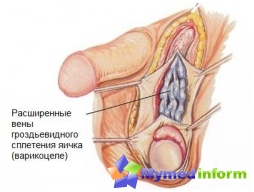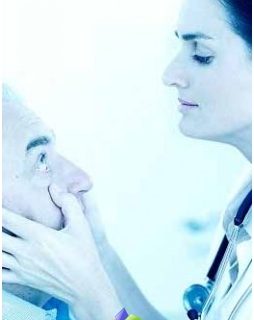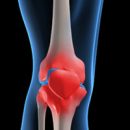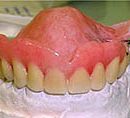Causes of the disease
Unfortunately, the deficiency of vitamins and useful substances is not the only factors that cause this disease. Pellagra can also be a consequence:
- pathological states of the digestive system, in which the absorption of food elements (for example, chronic enteritis) is disturbed;
- infectious diseases (dysentery, Tuberculosis);
- Chronic Alcoholism;
- enhanced insolation;
- The natural states of the body, in which the need for nicotine is increasing (during pregnancy, breastfeeding, unbearable physical exertion with defective nutrition).
A starting mechanism for the origin of Pellage is the disruption of the oxygen respiration of cells and metabolism in the body due to nicotinic acid deficiency.
Symptoms of the disease

From Pellagra mainly suffer from skin, digestive and nervous systems. Secondly «gets out» Endocrine system, heart and muscle skeleton.
Pellagra sick man suffers from general weakness, lack of appetite, burning in the oral cavity, abundant salivation, chronic chair disorder, stomach pain. Characteristic for the disease is paresthesia - a state when the patient is experiencing such strange sensations in the location of the peripheral nerves, like numbness, pinching, tingling, goosebumps.
First of all, the degenerative transformations of the skin and the symptoms of the disorders of the digestive system are becoming obvious, somewhat later - nervous depletion and mental problems.
The skin reacts to Pellagra as follows:
- Erythema appears (pathological redness);
- In particularly severe cases, bubbles are formed with muddy content inside (mainly on the face, neck, hands and legs);
- The skin acquires a gray shade;
- Appear «Islands» Skin Covers with hyperkeratosis (excessive either);
- Skin surface covers strong pigmentation;
- The affected areas are subsequently subjected to atrophy and sclerosis, some of them flake.
- Many patients suffer from strong inflammation of the mucous membranes of mouth, eye, nose and genital organs.
The lesions of the gastrointestinal tract with Pellagra are pronounced:
- bright red with «Polished» mucous surface;
- ulcerative stomatitis;
- Owning belly;
- Ahlorohydria of the gastric juice (lack of hydrochloric acid);
- reduced motor activity of the stomach;
- alternating constipation with diary;
- Vomot.
Destructive impaired psyche manifest:
- apathy and depression;
- worsening memory;
- Head pains and dizziness;
- Psychosis, complicated hallucinations.
At Pellagra, anemia and insignificant leukopenia. Sometimes polynevrit is developing. Spring disease, as a rule, is exacerbated due to increased solar activity.
In children on suspicions of Pellagra, there should be frequent diarrhea, which are not amenable to dietary, nor medicated measures taken. In general, the picture «Childish» Diseases are no different from the symptoms of the disease in adults. Rash on the skin in children can accompany a strong itch. There is an increased irritability and a frequent mood change.
Complication of the disease
Pellagra - Heavy Disease. Sometimes she torments man for years, then athighted, then exacerbating in the warm season.
The complication of the disease is the so-called sharp Pellagra with fatal outcome. In this case, destructive violations prevail in the work of the central nervous system. The attack starts suddenly, has a similar symptoms. Often there are vomiting, strong diarrhea, hallucinations, rigidity of the hands and legs, convulsions in response to touching the patient, triumism (chewing muscle tension). Tendon reflexes are sharply manifested, subfebrile and febrile body temperature increases, there are swelling and ascites. At the same time, changing skin changes are weakly pronounced or absent at all.
Diagnosis of the disease
If there is a pronounced Pellagra Triad (dermatitis, dementia, diarrhea) to put the correct diagnosis by a specialist is not much difficult. Also draw attention to the results of the overall analysis of urine - they show the presence of nicotine acid and vitamins of the group in.
Treatment of the disease

If the patient's help was provided in a timely manner, Pellagra's treatment prediction is favorable.
Patients are observed in the hospital. Everyone individually prescribed therapeutic nutrition with the necessary amount of vitamins and nutrients. In the diet, meat is necessarily present, fresh fish, liver, bread, buckwheat, peanuts, yeast. Calorie nutrition increase gradually.
Medicase therapy is to appoint nicotinamide or nicotinic acid inside (0.1 g 3 times a day after meals). If the patient has pronounced problems with the gastrointestinal tract, vitamins are introduced intravenously or intramuscularly, from 5 to 10 ml of 1% nitique solution for one and a half months.
Along with nicotine acid, the patient fills the stocks of vitamins of group B, they are injected injecting:
- Solution of thiamine chloride (B1) 5%, 1 ml;
- solution of riboflavin mononucleotide (B2) 1%, 1 ml;
- Pyridoxine solution of 5% hydrochloride (B6), 1 ml;
- A solution of cyanocobalamin (B12) 0.02%, 1 ml with macrocytosis.
In addition, a long-term use of hydrochloric acid preparations, gastric juice, drugs supporting the pancreas are prescribed. At the elevated salivation, atropine is prescribed. Pellagramic skin changes are treated systematically.
If the pellagra suffer is very exhausted, doctors resort to fractional blood transfusion (from 70 to 100 ml every 4-5 days). For the entire period of the disease, up to 6 transfusions can be held. Throughout the treatment, the patient shows the absolute physical and mental peace. Man should be ready to completely refuse smoking (life), from sunbathing. After treatment, a person may have the need to change the previous place of residence on where a more moderate climate.
Prevention of the disease

Our site once again draws the attention of its readers to the exceptional importance of a full, rich in various vitamins.
To never encounter such an extremely unpleasant disease like Pellagra, eat food containing nicotinic food every day. For health and well-being enough 20-25 mg per day.
Many nicotinees in yeast and wheat: 500 g of wheat bakery products provide the daily need of the body in this element. On your desk, liver, lamb, beef, pork, salmon should appear more often.
In milk, the content of nicotinic acid is negligible, but it is necessary to drink it - in its composition a lot of tryptophan, due to which the synthesis of nicotine in the body is possible.
Do not neglect multivitamin complexes with a mandatory presence in the group of vitamins in.









